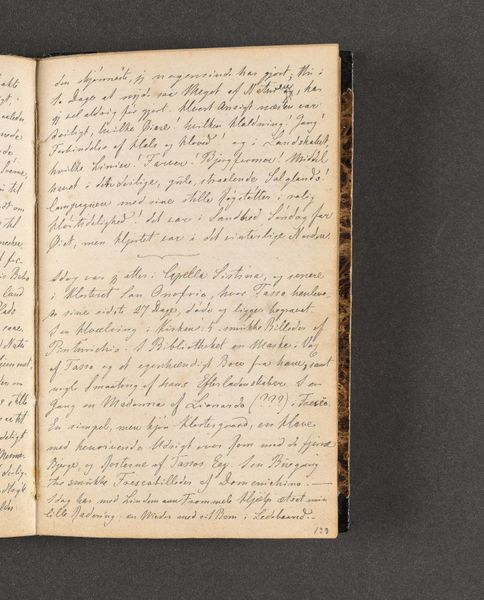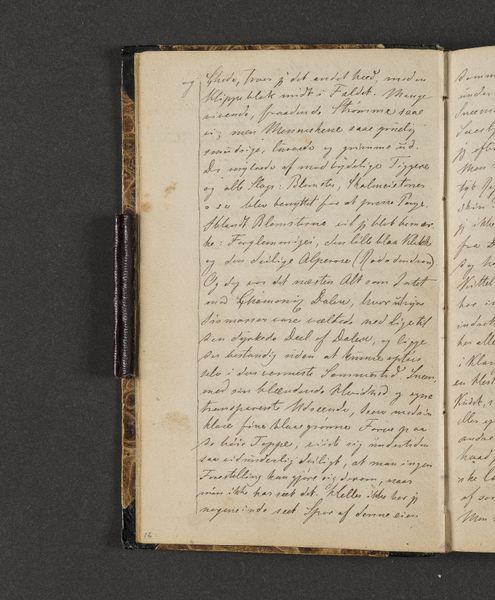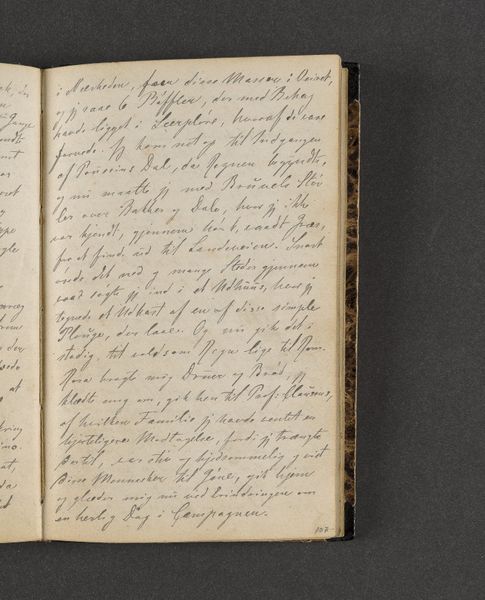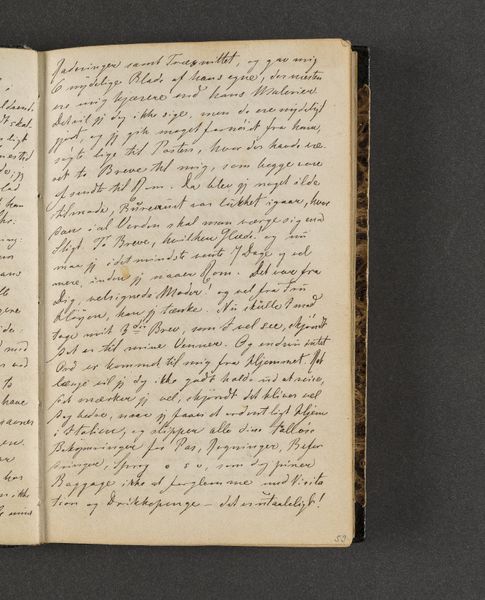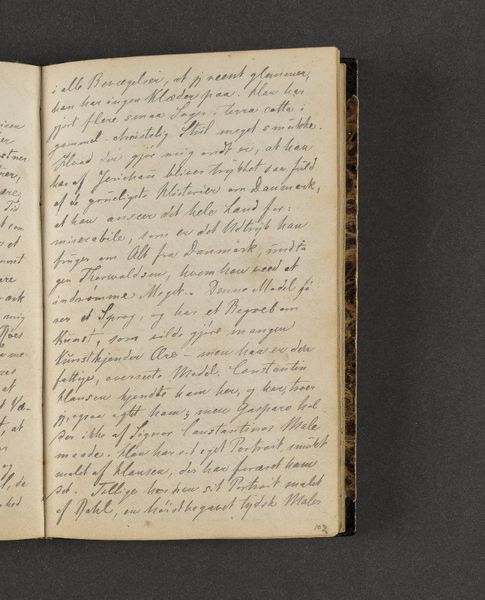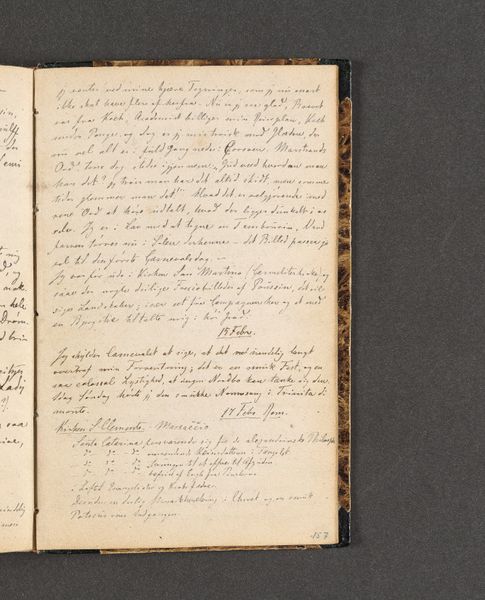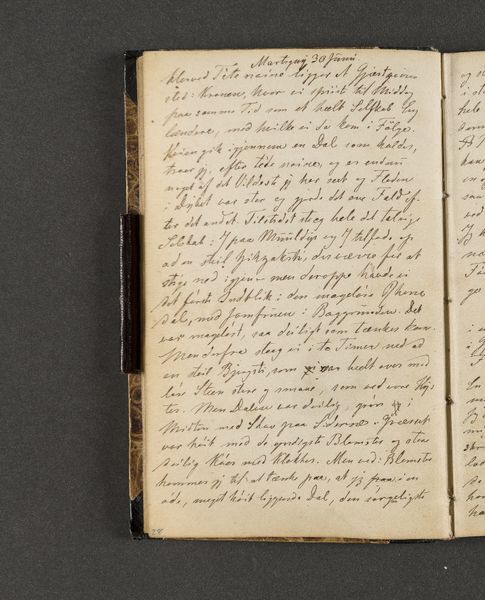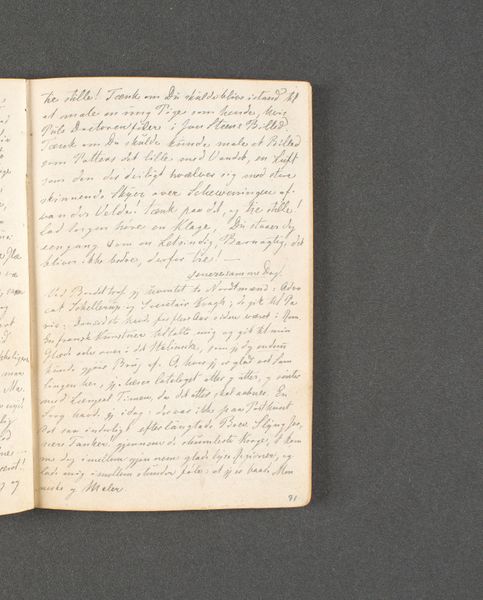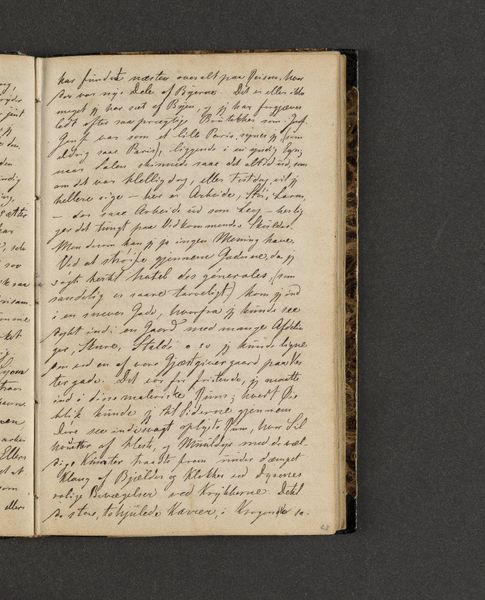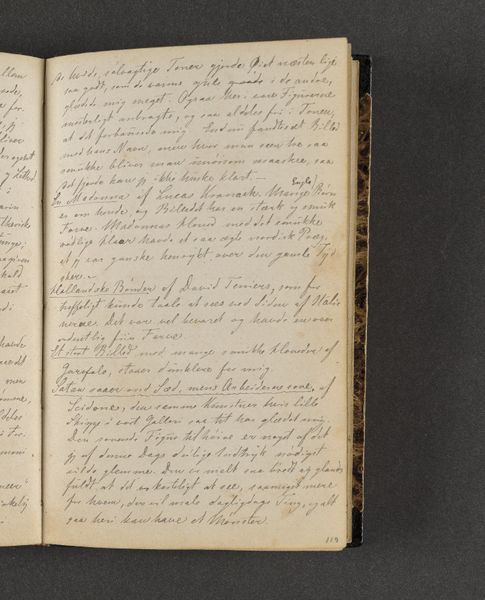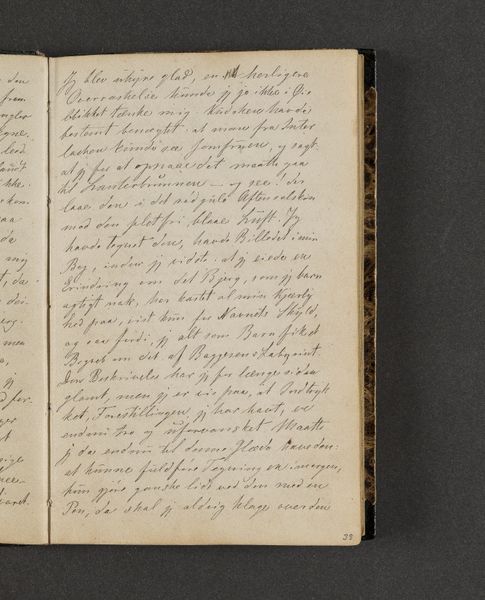
drawing, paper
#
drawing
#
paper
Dimensions: 161 mm (height) x 103 mm (width) x 11 mm (depth) (monteringsmaal)
Editor: Here we have "Rejsedagbog," from 1846, by Johan Thomas Lundbye, made with drawing on paper, from the SMK - Statens Museum for Kunst collection. It appears to be a page from a travel journal, filled with elegant handwriting. It evokes a sense of intimacy, almost as if we are intruding on someone’s private thoughts. What strikes you about this piece? Curator: From a materialist perspective, this is fascinating. We're seeing the physical embodiment of thought—ink meticulously applied to paper. It’s not just the words themselves but the labor invested in their creation that matters. Think about the socioeconomic context: what does it mean to have the time, resources, and skills necessary to create such a detailed personal record? Editor: I hadn't considered it that way, but it's true. This journal signifies a certain privilege, doesn't it? Curator: Precisely. And consider the paper itself. Where did it come from? Who made it? What were the conditions of their labor? Each element of the journal—the ink, the paper, even the binding—tells a story of production and consumption in 19th-century Denmark. Is it fine-quality paper, or something more utilitarian? The answer offers hints as to its intended audience. Editor: So you are more interested in the materiality and construction, less interested in, say, the emotional content of the text? Curator: It's not that emotional content is irrelevant, but for me, it’s secondary to understanding the journal as a physical object embedded in a specific historical and economic reality. It's about unearthing the unseen labor behind artistic creation. What further social dynamics were in play to yield its existence, I wonder. Editor: That makes me think about the role of literacy too. Access to writing, both reading and producing it, would have been far from universal at the time. Curator: Exactly! So this journal becomes more than just a personal record, it's also a marker of social standing and cultural capital. It shows who had a voice, literally and figuratively. Editor: This approach really shifts my understanding. I’ve usually thought about journals in terms of personal expression, but seeing it as a product of its time makes it so much richer. Thanks!
Comments
No comments
Be the first to comment and join the conversation on the ultimate creative platform.



